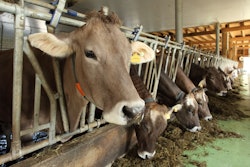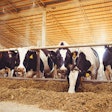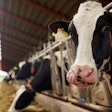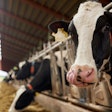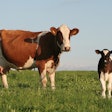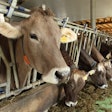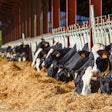
A new study looks at how diet and feeding schedule can affect Salmonella infections in beef cattle.
The study, published in the American Society for Microbiology’s Microbiology Spectrum journal, found that high-starch diets can potentially lower Salmonella prevalence in cattle, especially within the lymph nodes – organs that are often embedded in fat trims included in ground beef products.
“Lymph nodes may be present in fat trimmings that are used to balance lean-to-fat ratios in ground beef products,” said Yesica Botero, a fourth-year biomedical sciences Ph.D. student at Texas A&M University, in a report. “This is a food safety concern because Salmonella can hide inside lymph nodes, where surface cleaning or treatments do not reach. As a result, it can still be present in ground beef.”
Understanding the role that a high-starch diet potentially plays in reducing Salmonella prevalence could have major impacts on the beef cattle industry, providing ranchers with new options for controlling the spread of bacteria within their herds, according to the report from Texas A&M University College of Veterinary Medicine and Biomedical Sciences.
Researchers took samples of feces, hides, lymph nodes and soil from cattle pens over a period of more than seven months. They found that while there was little difference in Salmonella populations between cattle with scheduled versus erratic feedings, the level of starch in the diet made a notable impact.
“We saw a reduction in Salmonella, especially in the lymph nodes, when cattle were fed a high-starch diet,” Botero said. “High-starch diets typically cause a lower pH in the rumen, which may be what reduces Salmonella prevalence in the gastrointestinal tract and, subsequently, in lymph nodes.”
Findings from a separate study suggested high-starch diets may also correlate with a higher incidence of liver abscesses.
“This is something we would like to explore further in upcoming studies by testing different starch concentrations in the diet to find one that does not harm cattle health – such as by increasing the risk of liver abscesses – but still helps lower Salmonella levels,” Botero said.




